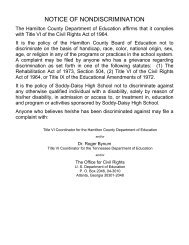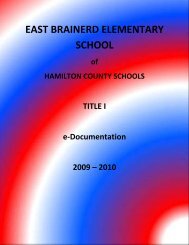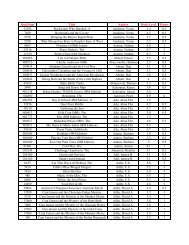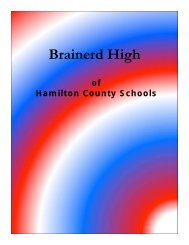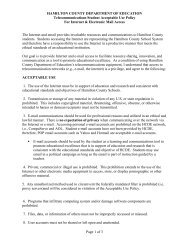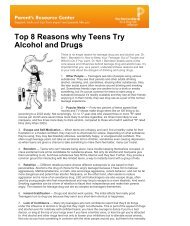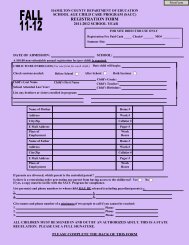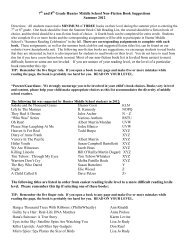RESOURCE PACKET Assessment of Language Impairment
RESOURCE PACKET Assessment of Language Impairment
RESOURCE PACKET Assessment of Language Impairment
Create successful ePaper yourself
Turn your PDF publications into a flip-book with our unique Google optimized e-Paper software.
Socioemotional Dimensions in Communication<br />
Autism Questionnaire<br />
Student name____________________ Completed by____________________ Date __________<br />
SOCIAL RELATEDNESS<br />
Social and communicative motivation<br />
Student typically prefers to be in proximity <strong>of</strong> others.<br />
Student typically prefers to be alone.<br />
Student responds to and initiates social games and routines.<br />
Student visually orients to others (face to face gaze).<br />
Student regularly uses gaze shifts to reference the attention <strong>of</strong> others.<br />
Frequency <strong>of</strong> communicative acts directed to adults and other children: __________________<br />
Joint attention<br />
Student follows adults’ visual line <strong>of</strong> regard. ________________________________________<br />
Student observes adults’ or other children’s activity. __________________________________<br />
Student communicates to establish joint attention verbally by<br />
Check appropriate communicative functions.<br />
commenting,<br />
requesting information, and/or<br />
providing information.<br />
Student responds to the preverbal or verbal signals <strong>of</strong> others to establish shared attention.<br />
Student is able to maintain and follow-up on topics introduced by others (for older students).<br />
Social imitation<br />
Student imitates actions with some evidence <strong>of</strong> social orientation (e.g., gaze checks, sharing <strong>of</strong><br />
affect, verbal communication).<br />
Student imitates vocalizations with some evidence <strong>of</strong> social orientation.<br />
Student imitates verbalizations with some evidence <strong>of</strong> social orientation.<br />
EMOTIONAL EXPRESSION AND RELATEDNESS<br />
Attachment<br />
Student uses caregivers as a base for security and emotional “refueling”.<br />
After a reasonable period <strong>of</strong> time, student sees other adults (e.g., teacher, parapr<strong>of</strong>essional,<br />
etc.) as a base <strong>of</strong> security.<br />
Functional Expression<br />
Student expresses different emotions through facial expression, vocalization, and/or<br />
verbalizations that are appropriate to the situational and interpersonal context.<br />
Circle appropriate choices<br />
Student shares emotional states by directing affect displays to others.<br />
Student understands and responds appropriately to the emotional expressions <strong>of</strong> others<br />
Empathy<br />
Student demonstrates concern for or actively attempts to soothe another student who has<br />
been hurt or is otherwise in distress.<br />
SOCIABILITY IN COMMUNICATION<br />
Student communicates for the functions <strong>of</strong>:<br />
Behavioral regulation (i.e., requesting objects/actions, protesting)<br />
Social interaction (i.e., greeting, calling, requesting social routine, requesting comfort)<br />
Joint attention (i.e., commenting, requesting and providing information)<br />
If student communicates primarily for behavioral regulation, this may be indicative <strong>of</strong> limited sociability in<br />
communication.<br />
ED –4072 / Rev. 07.09<br />
Department <strong>of</strong> Education<br />
<strong>Language</strong> <strong>Impairment</strong> Resource Packet




